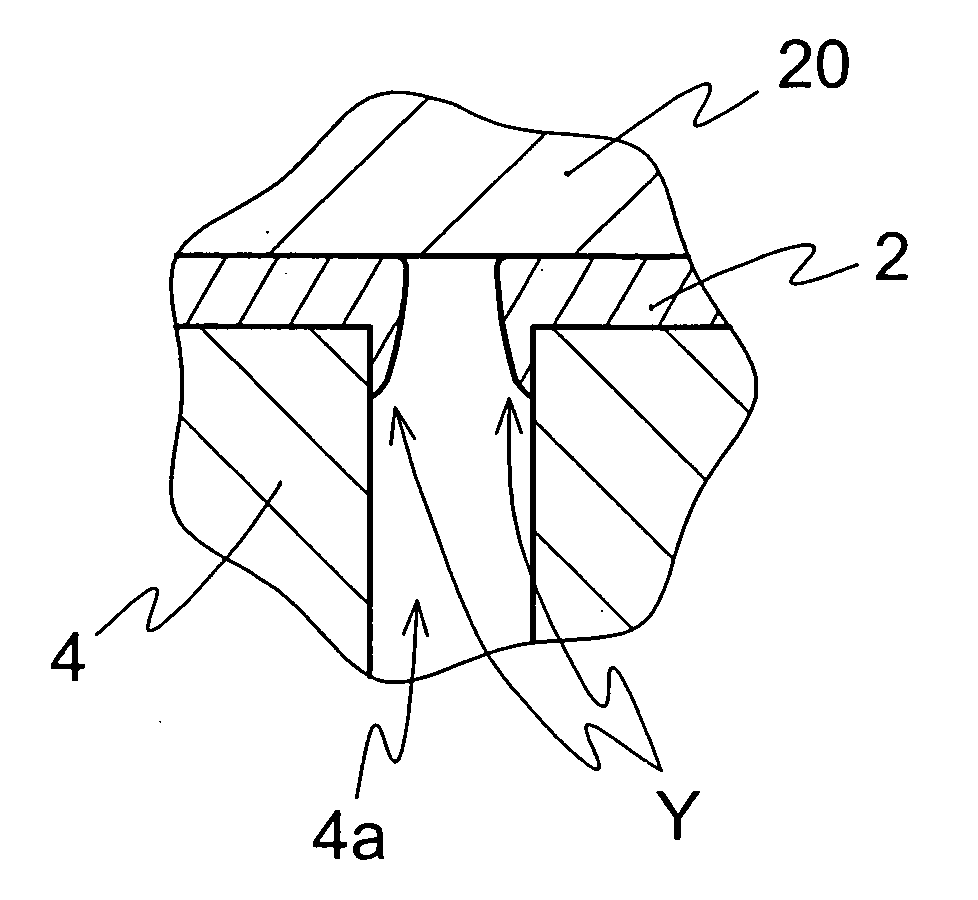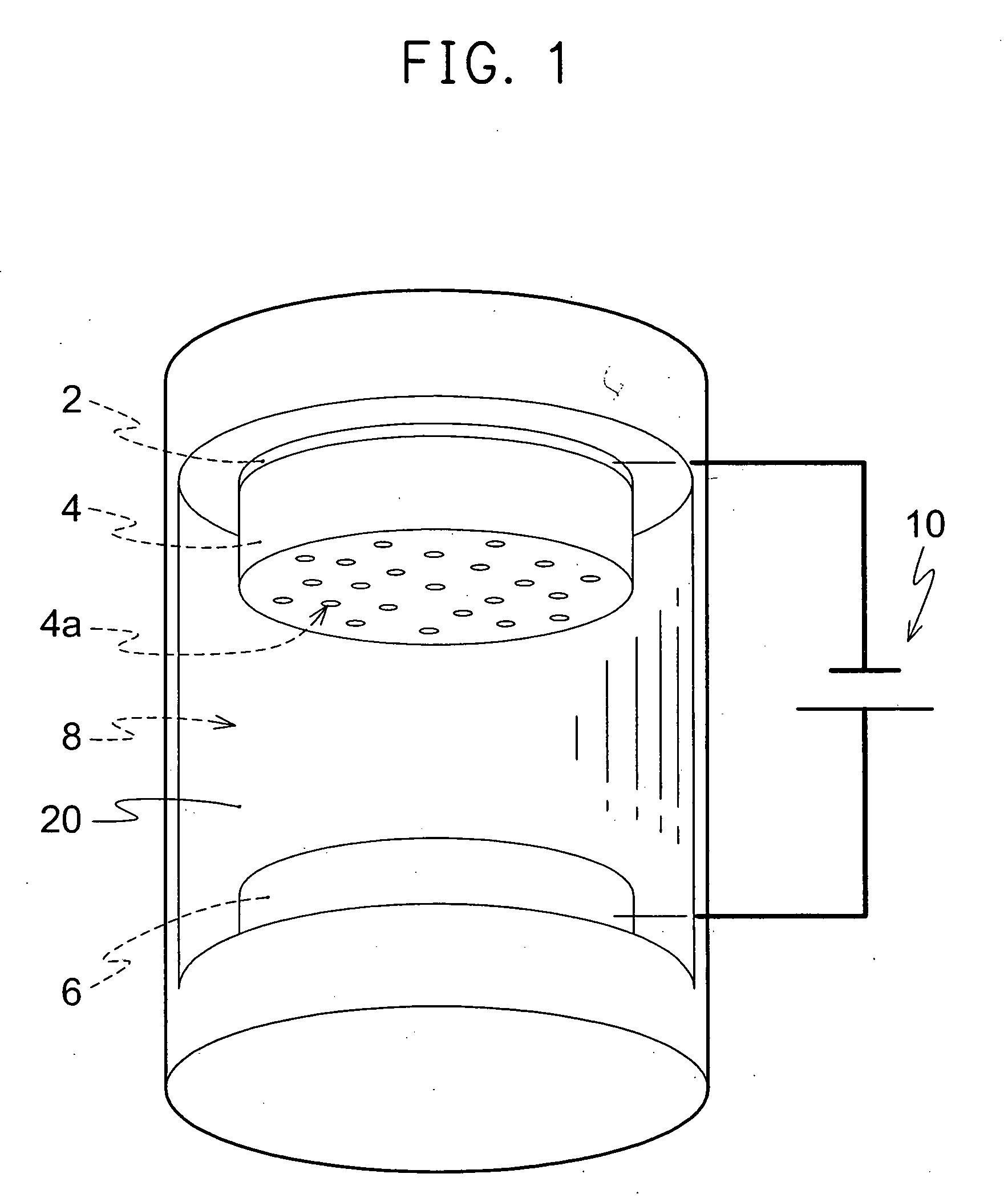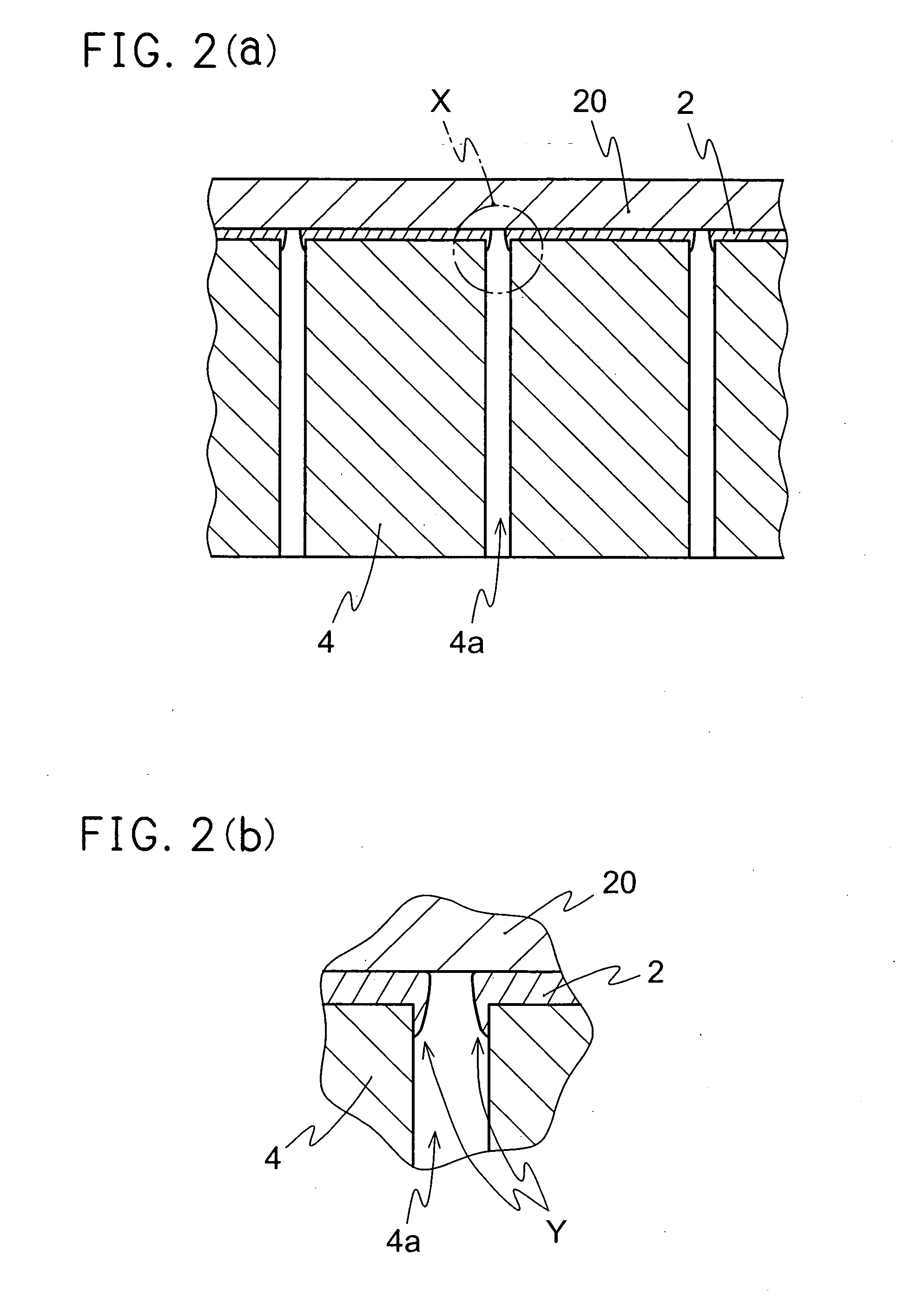Apparatus for Manufacturing Metal Nanotube and Process for manufacturing Metal Nanotube
a technology of metal nanotubes and apparatuses, applied in the field of nanotubes, can solve the problems of difficult manufacturing of metal nanotubes with a high aspect ratio, whose utilization value is larger, and difficult to achieve the effect of achieving high utilization valu
- Summary
- Abstract
- Description
- Claims
- Application Information
AI Technical Summary
Benefits of technology
Problems solved by technology
Method used
Image
Examples
example 1
[0054] As shown in Table 1, a polycarbonate film with a thickness of 6 μm and having 4×108 pieces per 1 cm2 of penetrated holes having a hole diameter of 100 nm was used as a porous film 4.
[0055] A film having a thickness of 30 nm comprising a platinum-palladium alloy was formed as a cathode 2 on one surface of this porous film 4 by spattering. Even after the cathode 2 was formed, the penetrated holes of the porous film were not blocked.
[0056] An anode 6 in a shape of a circular disc plate-comprising Ni was disposed within a container 20 in a cylindrical shape, and a supporting ring 22 was mounted via a spacer 24 in a cylindrical shape, and then, an aqueous solution containing 280 g / l of NiSO4.7H2O, 45 g / l of NiCl2.6H2O and 38 g / l of H3BO3 ([Ni2+]=1.16 M) was injected as an electrolyte solution 16. The pH of the solution was 1.5.
[0057] Next, the porous film 4 was disposed at a notch provided nearby the center of the supporting ring 22, and a current collector 12 in a shape of a c...
example 2
[0061] As shown in Table 1, a three-electrode cell was assembled in the same manner as Example 1. The assembled three-electrode cell was turned upside down and set contrary to the case of FIG. 4 so that the cathode 2 is located at a lower position and the anode 6 is located at an upper position, and a nanotube was manufactured by applying a voltage of −0.7 V for 1200 seconds between the cathode 2 and the anode 6.
[0062] The porous film 4 was taken out from the three-electrode cell and immersed into dichloromethane to dissolve and remove polycarbonate, and then, metal nanotubes having a diameter of 100 nm and a length of 6 μm were obtained, however, a considerable number of metal nanowires were also obtained.
example 3
[0063] As shown in Table 1, a three-electrode cell was assembled in the same manner as Example 1. The assembled three-electrode cell was disposed so that the cathode 2 and the anode 6 were parallel to the direction of gravity, and a nanotube was manufactured by applying a voltage of −0.7 V for 1200 seconds between the cathode 2 and the anode 6.
[0064] The porous film 4 was taken out from the three-electrode cell and immersed into dichloromethane to dissolve and remove polycarbonate, then, a large number of metal nanotubes having a diameter of 100 nm, a length of 6 μm and a wall thickness of 20 nm were obtained.
PUM
| Property | Measurement | Unit |
|---|---|---|
| thickness | aaaaa | aaaaa |
| diameter | aaaaa | aaaaa |
| diameter | aaaaa | aaaaa |
Abstract
Description
Claims
Application Information
 Login to View More
Login to View More - R&D
- Intellectual Property
- Life Sciences
- Materials
- Tech Scout
- Unparalleled Data Quality
- Higher Quality Content
- 60% Fewer Hallucinations
Browse by: Latest US Patents, China's latest patents, Technical Efficacy Thesaurus, Application Domain, Technology Topic, Popular Technical Reports.
© 2025 PatSnap. All rights reserved.Legal|Privacy policy|Modern Slavery Act Transparency Statement|Sitemap|About US| Contact US: help@patsnap.com



